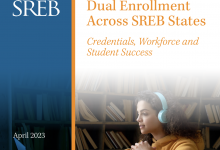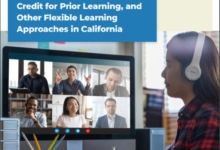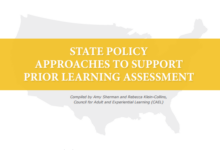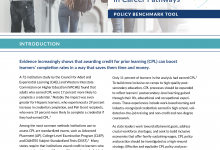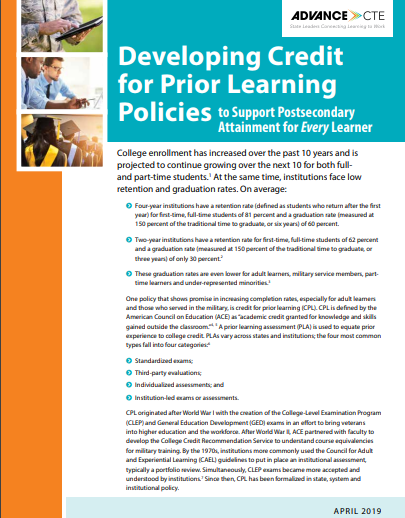College enrollment has increased over the past 10 years and is projected to continue growing over the next 10 for both full- and part-time students. At the same time, institutions face low retention and graduation rates. One policy that shows promise in increasing completion rates, especially for adult learners and those who served in the military, is credit for prior learning (CPL). CPL practices have been found to increase access to and the affordability of postsecondary opportunities for learners.
CPL policies can be found at the state, postsecondary system or institutional levels — and most often a combination of the three. Overall, control of CPL implementation tends to be greater at the local level than at the state level. Although creation and implementation of a formalized CPL policy typically falls to the state’s higher education system or the individual institution, state-level leadership can play a vital role in building support and momentum among stakeholders.
To help states explore the significant impact of credit for prior learning (CPL) and what their role should be in supporting these opportunities, Advance CTE with support from the Joyce Foundation, examined research and best practices in Developing Credit for Prior Learning Policies to Support Postsecondary Attainment for Every Learner. This report features data on the benefits of CPL for learners, as well as best practices in Colorado, Kansas, Louisiana, Minnesota, Tennessee and Virginia across topics such as CPL for military service members, portability of credits and how to communicate about CPL opportunities. The report also concludes with recommendations for how states can best support CPL through state statute and by incorporating CPL into the state’s broader postsecondary agenda.
View the Credit for Prior Learning infographic here.

